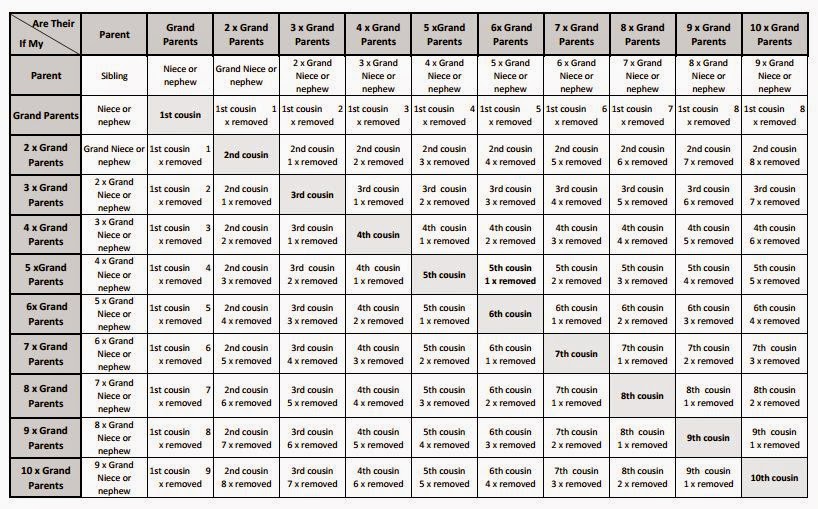THE SENSIBLE CENSUS
Every ten years, on a year ending with a zero, Americans take part in filling out the United States Census. Why exactly do we do this and how can the census assist you in finding out more about who your ancestors were?
Official Census Dates:
The United States Congress established the census to record and keep track of the population exactly as it was on the official census date. The first official census took place in 1790. The recorded population of the United States in 1790 was 3.9 million people! I think it's safe to assume that we've grown dramatically in population since then, especially with the influx of immigrants during the two major waves of immigration in the 19th and 20th centuries. Censuses have been taken in the following years thus far: 1790, 1800, 1810, 1820, 1830, 1840, 1850, 1860, 1870, 1880, 1890, 1900, 1910, 1920, 1930, 1940, 1950, 1960, 1970, 1980, 1990, 2000, and 2010.
Another important fact to consider is that the United States wasn't "whole" in 1790. If you remember from your school years, the last two states to enter the Union were Alaska and Hawaii, both admitted in 1959. Therefore, as the United States grew due to Manifest Destiny, the California Gold Rush, the waves of immigration, and the annexation of territories, we became larger and larger as the decades passed.
Limitations of the Census Records:
In my years of researching, I've had easy and difficult times when tracking down ancestors. For example, my mother's maternal grandparents, my great-grandparents, came to America in 1920, however I cannot find them ANYWHERE on the 1930 and 1940 censuses. My father's family has presented themselves many times throughout the censuses. So, what is the problem? Here are some reasons:
1. Your ancestors may not have been at home when the enumerator, (the person that went from door to door to collect the information--we now do this by U.S. Mail), came knocking.
2. Your ancestors' names may have been spelled incorrectly. If you are typing their names into an ancestry search engine the correct way, but they were recorded the incorrect way by the enumerator, you will find that you have to spend extra time in trying different spelling configurations. An example to illustrate this point is as follows: My mother's paternal grandparents' names were Vincenzo Ferrara and Concetta Scotti-Ferrara. When I tried looking them up, spelling their last name correctly as "Ferrara", they would not appear. I knew they've been in America since 1911, so what was the deal? It wasn't until I typed in their last name as "Ferraro" that I was able to get a hit. I knew I was looking at the correct family because I already knew what street they lived on, and I knew the names of the children in the household, but there were many spelling and grammatical errors.
3. Reading, writing, and arithmetic were not as important then as they are now. Remember, that many of your ancestors may have had to leave school before 7th or 8th grade to help contribute to the household income. My two great-grandmothers on my mother's side were not literate in English. I don't even believe they were literate in their native language, Italian. They couldn't even sign their names, but they were excellent when it came to mathematical figures.
Question Comparisons:
The difference in the types of questions asked by the government were astounding between 1790 and 1940. Take a look below:
A) Questions of the 1790 United States Census:
1-Name of the head of the family
2-Free white males 16-years-of-age and older, including heads of families
3-Free white males under 16-years-of-age
4-Free white females
5-All other free persons
6-Slaves
7-Dwellings and miscellaneous
B) Questions of the 1940 United States Census:
1-Street
2-House number
3-Family number
4-Home owned or rented
5-Value of home if owned or monthly rental if rented
6-Does this household live on a farm
7-Name of each person whose usual place of residence on April 1, 1940, was in this household
8-Relation to head of household
9-Sex
10-Color or race
11-Age at last birthday
12-Marital status
13-Attended school or college any time since March 1, 1940
14-Highest grade of school completed
15. Place of birth
16-Citizenship of the foreign born
17-City, town, village
18-County
19-State (or territory or foreign country)
20-On a farm
(There are thirty more questions, so I won't bore you with them here, but you are most welcomed to look them up if you are interested to know the rest.)
Census Example:
Here is the 1940 United States Census information for my maternal grandparents. By examining this record, I was able to obtain the following information: my grandfather, (whose name is spelled incorrectly on this census), was 29-years-old in 1940; they list his birth year being circa 1911 (this was true); he was a white, married male; he lived on Eldridge Street in Manhattan with my grandmother and my aunt (my mother and my uncle were not born yet).
I also learned that he worked as a longshoreman, he did not go to college and completed school up to the 8th grade. He worked 25 hours per week and his income was $520.
Census records should not be discounted when researching your past. Both Ancestry.com and familysearch.org are up-to-date with their census records. Try it out. You may be surprised by what you find out.
We will explore more of the United States Census at a later date. Small steps first before we sprint! Happy hunting!

















